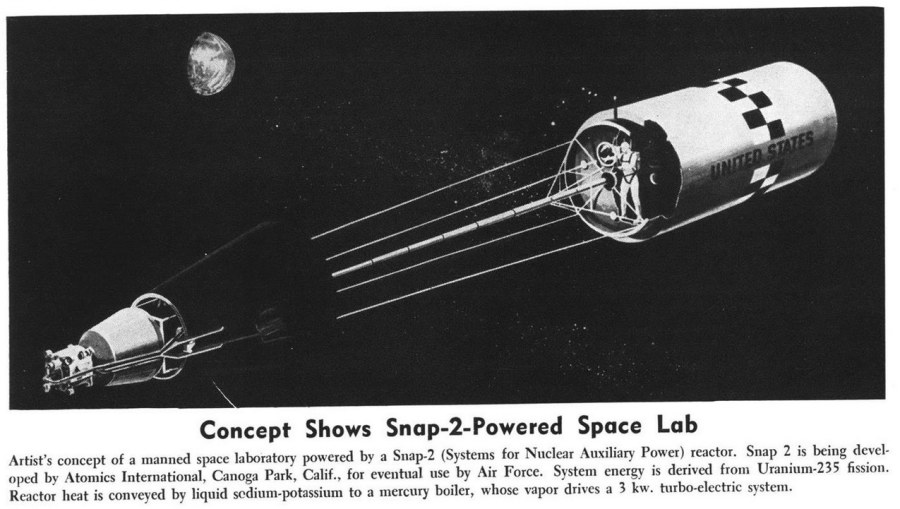A small magazine article from 1963 describing and depicting a MOL-like “space lab” equipped with a SNAP 2 nuclear reactor. This would have provided something along the lines of 3 kilowatts, plus an added bonus radiation environment. As show in the art, the reactor would be separated from the lab by a fairly long extendable rod, provided a reduction in radiation flux. The reactor would be the small object at far left; immediately next to it would be the “shadow shield,” typically made of tungsten (to stop gamma rays) and lithium hydride (to stop neutrons). This conical frustum is typically the most massive part of space reactors like this, and was used to shield a relatively small conical region, in this case centered on the space laboratory. If someone were to do a space walk from the lab and drift too far away to the side, entertaining things could well be done to their DNA. Extending beyond the shadow shield is a black cone, the thermal radiator for the system. Contained within the radiator would be tanks of mercury, pumps and turbogenerators; liquid sodium metal would flow through the reactor then through a heat exchanger, boiling the mercury. The mercury vapor would then either directly flow through the radiator, being cooled back to liquid, or through a heat exchanger, some other fluid being passed through the radiator.
Numerous ideas were floated through the mid 1960’s for attaching reactors such as this to MOL-like space labs. The main problem with this was that these labs were typically planned for only a single use; in that case, hydrogen/oxygen fuel cells or solar panels would almost always make more economic and mass budget sense.

Testing 2…